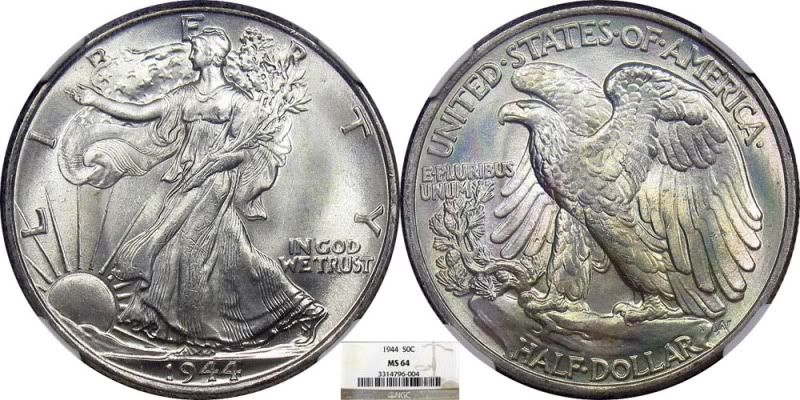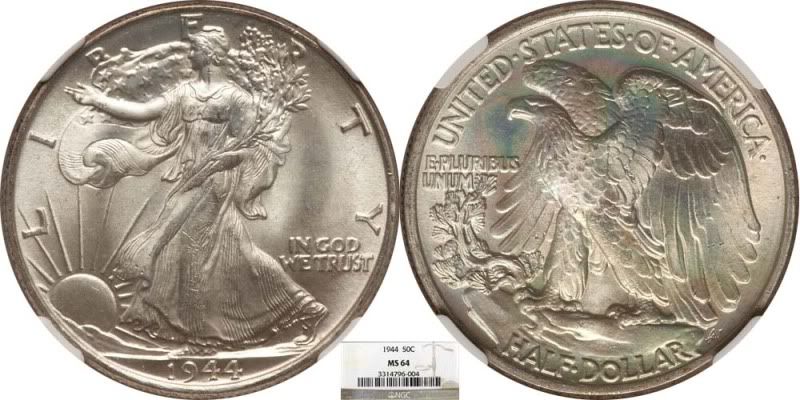Photographing this WLH is a PITA
I have spent hours trying to capture the iridescent toning on this WLH to no avail. All I can get is a very small area of color to show on the reverse.

Now compare my photo to the Heritage photo which better shows the coverage of the toning on the reverse. Has anybody ever successfully photographed this type of toning before? If so, any suggestions?

1944 WLH NGC MS64

Now compare my photo to the Heritage photo which better shows the coverage of the toning on the reverse. Has anybody ever successfully photographed this type of toning before? If so, any suggestions?

1944 WLH NGC MS64
<a target=new class=ftalternatingbarlinklarge href="http://stores.ebay.com/Lehigh-Coins">LEHIGH COINS on E-Bay
0
Comments
Apart from the difference in "white", it looks like obscured/indirect/soft or bounced lighting. Looks like a trade from definition of strike (your photo) to color (Heritage photo).
Best,
Eric
Eric
<< <i>Frankly I like your photos better than Heritages. >>
I would agree with that 100%
Keeper of the VAM Catalog • Professional Coin Imaging • Prime Number Set • World Coins in Early America • British Trade Dollars • Variety Attribution
<< <i>
<< <i>Frankly I like your photos better than Heritages. >>
I would agree with that 100% >>
+1
Nice pics
Too many positive BST transactions with too many members to list.
<< <i>Close one eye and tilt it around in the light until you get the view you want to capture, then look to see where the lights are. If you look with both eyes open, the opalescent toning will mess with you too much and you won't be able to see the kind of shot that is possible. >>
Does this really work? I've had some pieces that have the same type of irridescent/opalescent toning that look really nice in hand but just never seem to image adequately. Is it because the "color play" effect is a "stereo" one?
<< <i>I should have asked which do you feel is more accurate to the coin in hand? My guess is something between the two images?
Eric >>
Overall color, detail, and luster, my images are much more accurate. The only thing that the Heritage images have is that they show the iridescent rainbow color that my image only captures a small blush.
<< <i>Does this really work? I've had some pieces that have the same type of irridescent/opalescent toning that look really nice in hand but just never seem to image adequately. Is it because the "color play" effect is a "stereo" one? >>
To an extent, yes. Compared to brightly colored toning, opalescent toning comes and goes as you tilt the coin, and one eye may pick it up differently than the other. Same goes for the accompanying luster. Closing one eye and moving the coin slowly will give you more realistic expectations for imaging.
Keeper of the VAM Catalog • Professional Coin Imaging • Prime Number Set • World Coins in Early America • British Trade Dollars • Variety Attribution